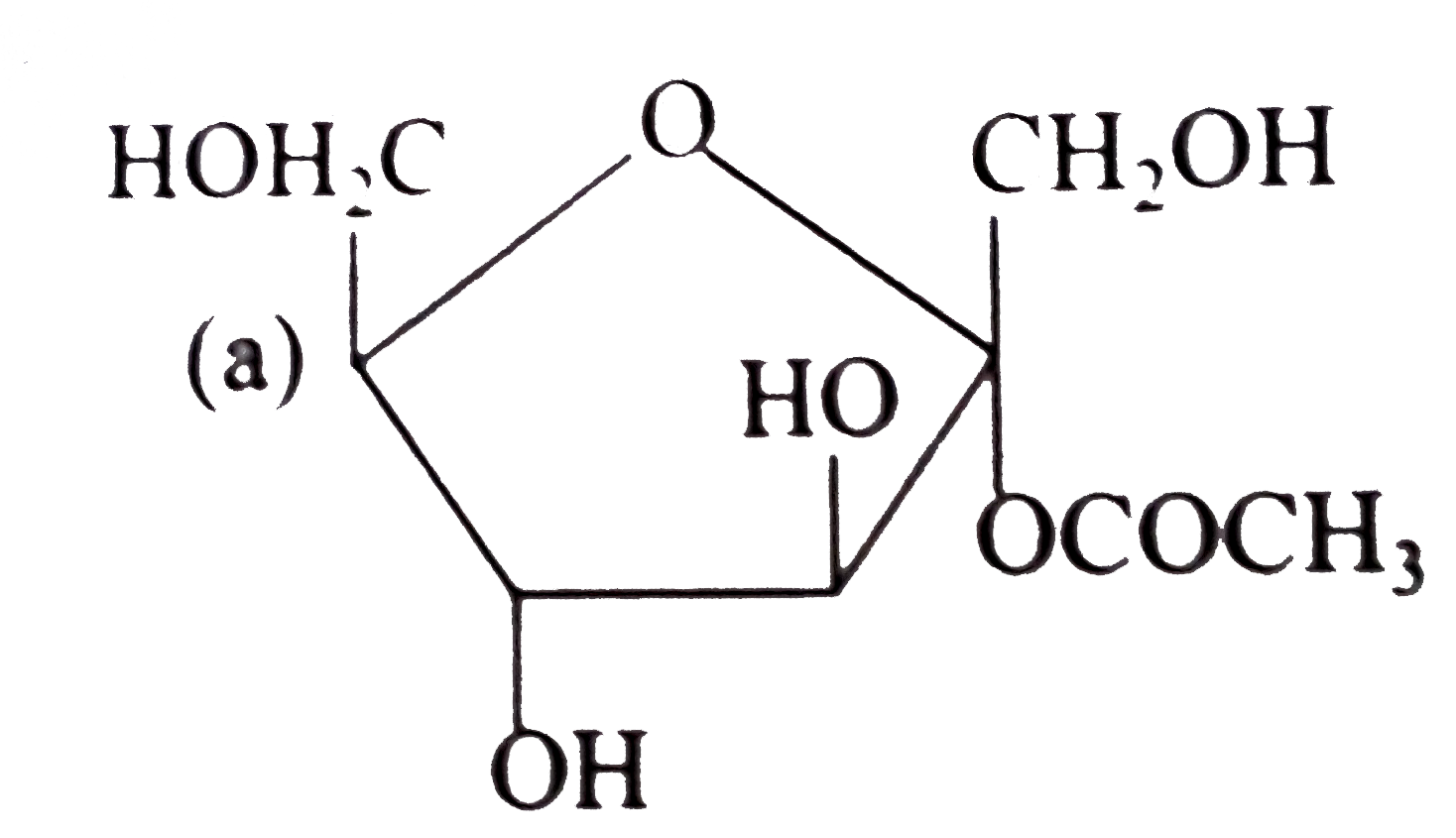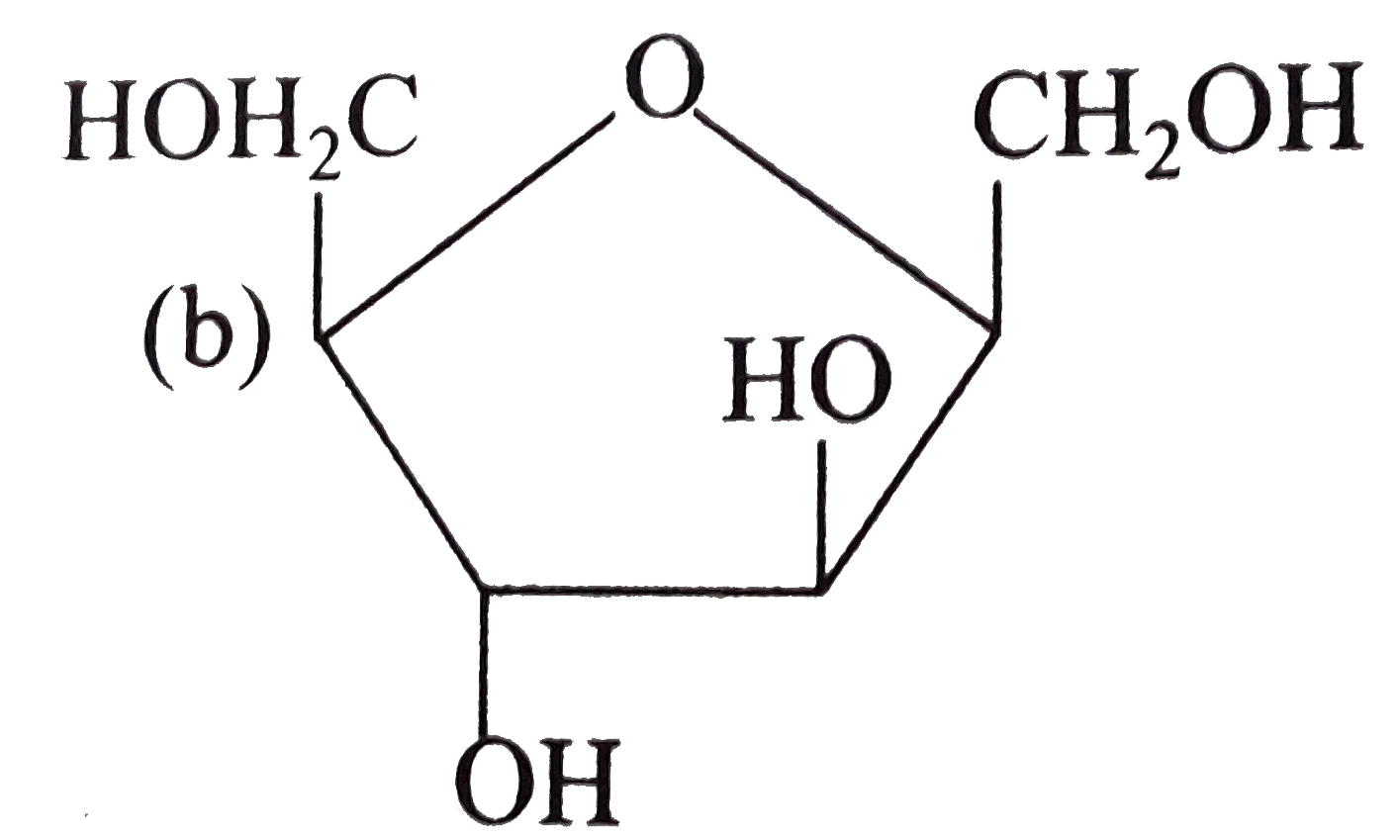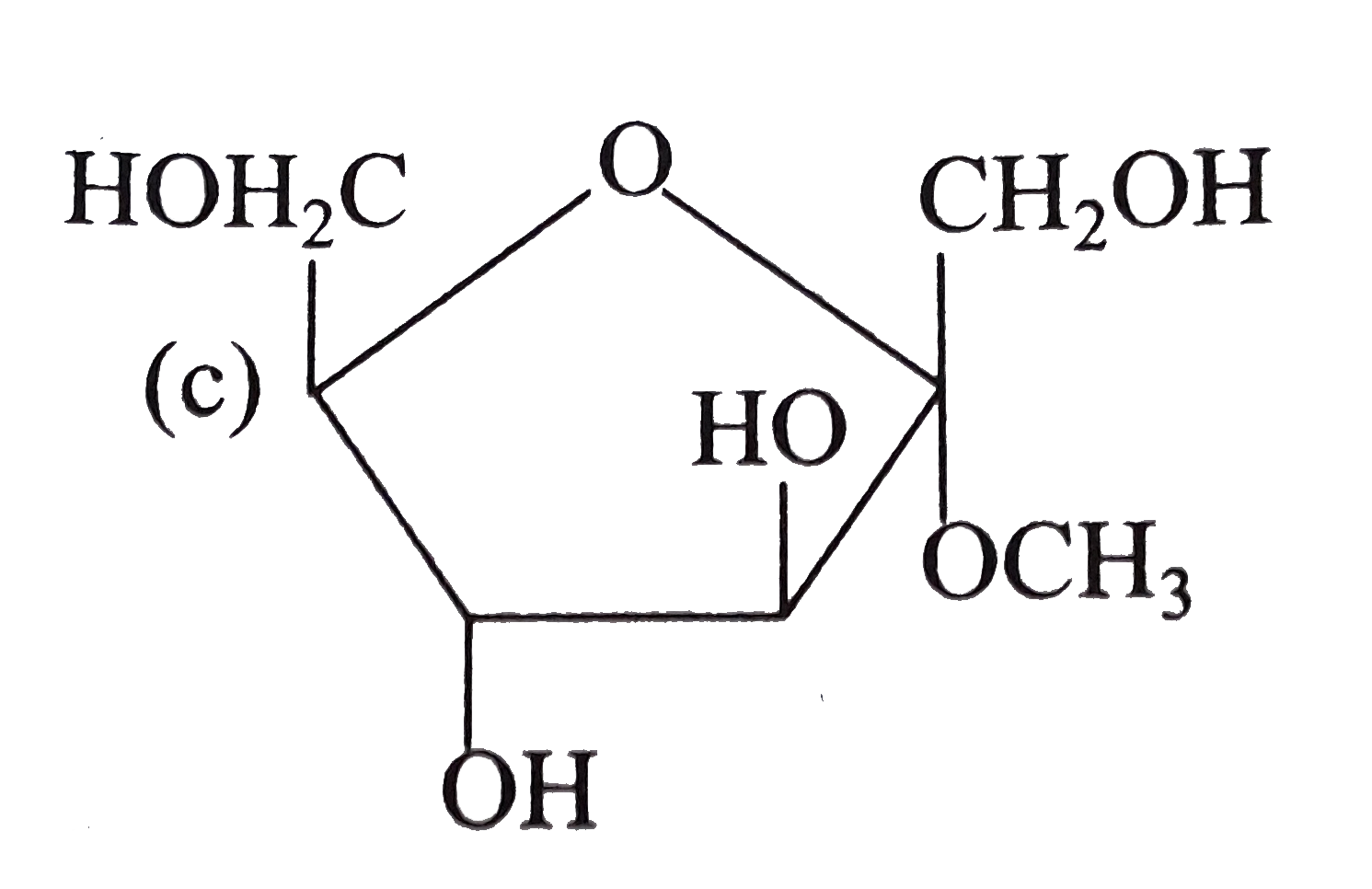Which of the following compounds will behave as a reducing sugar in an aqueous KOH solution ?




The correct Answer is:A
To determine which of the given compounds behaves as a reducing sugar in an aqueous KOH solution, we need to understand the characteristics of reducing sugars. Reducing sugars typically contain either an aldehyde group (–CHO), a ketone group (C=O), or a hemiacetal structure.
1. Identify the Functional Groups:
- We need to analyze the compounds provided in the question to identify the presence of aldehyde, ketone, or hemiacetal groups.
2. Understanding Reducing Sugars:
- A reducing sugar is one that can donate electrons to another chemical species, which is often facilitated by the presence of an aldehyde or a ketone functional group. Hemiacetals can also act as reducing sugars because they can convert back to aldehydes or ketones.
3. Examine Each Compound:
- For each compound, check for the presence of the aforementioned functional groups.
- If a compound has a free aldehyde or ketone group, it can act as a reducing sugar.
4. Reactions in Aqueous KOH:
- When a compound is treated with aqueous KOH, any aldehyde or ketone group can undergo reactions that may confirm its reducing nature.
- For example, if a compound has a ketone group, it can potentially form an alpha-hydroxyketone upon reaction with KOH, indicating it is a reducing sugar.
5. Conclusion:
- After analyzing the compounds, identify which one contains a functional group that allows it to act as a reducing sugar. The compound that meets this criterion is the answer to the question.
- We need to analyze the compounds provided in the question to identify the presence of aldehyde, ketone, or hemiacetal groups.
- A reducing sugar is one that can donate electrons to another chemical species, which is often facilitated by the presence of an aldehyde or a ketone functional group. Hemiacetals can also act as reducing sugars because they can convert back to aldehydes or ketones.
- For each compound, check for the presence of the aforementioned functional groups.
- If a compound has a free aldehyde or ketone group, it can act as a reducing sugar.
- When a compound is treated with aqueous KOH, any aldehyde or ketone group can undergo reactions that may confirm its reducing nature.
- For example, if a compound has a ketone group, it can potentially form an alpha-hydroxyketone upon reaction with KOH, indicating it is a reducing sugar.
- After analyzing the compounds, identify which one contains a functional group that allows it to act as a reducing sugar. The compound that meets this criterion is the answer to the question.
Topper's Solved these Questions
- BOOK - IIT-JEE PREVIOUS YEAR (CHEMISTRY)CHAPTER - BIOMOLECULES AND CHEMISTRY IN DAILY LIFEEXERCISE - Chapter Test9videos
BIOMOLECULES AND CHEMISTRY IN DAILY LIFE
- BOOK - IIT-JEE PREVIOUS YEAR (CHEMISTRY)CHAPTER - BENZENE AND ALKYL BENZENEEXERCISE - JEE Main And Advanced56videos
BENZENE AND ALKYL BENZENE
- BOOK - IIT-JEE PREVIOUS YEAR (CHEMISTRY)CHAPTER - CARBOXYLIC ACID AND THEIR DERIVATIVESEXERCISE - CHAPTER TEST3videos
CARBOXYLIC ACID AND THEIR DERIVATIVES
Similar Questions
Knowledge Check
- Question 1 - Select One
Which of the following compounds is the milk sugar?
A(+) - FructoseB(+) - LactoseC(+) - SucroseD(+) - Glucose - Question 2 - Select One
Which is a reducing sugar ?
ACelluloseBMaltoseCSucroseDStarch - Question 3 - Select One
Which of the following compounds behave as an unsaturated hydrocarbon ?
AbutaneBethaneCethylalcoholDethene
Which of the following disaccharide is not a reducing sugar?
View SolutionWhich of the following is an example of a non reducing sugar?
View SolutionWhich of the following behaves as a saturated compound?
View SolutionWhich one is a reducing sugar ?
View SolutionWhich of the following carbohydrate is a reducing sugar ?
View Solution

